| Lesson 6 | Risks of e-commerce |
| Objective | Discuss potential problems in e-commerce environment |
Risks of ecommerce
Until now, we have given e-commerce preferential treatment. We have assumed that all kinds of e-commerce are good for business, when in fact,
undertaking e-commerce involves significant amounts of business risk, which organizations should assess and weigh before embarking on e-commerce.
Credit card fraud
One of the more obvious risks, particularly in B2C implementations, involves vulnerability to credit card fraud. Because the network carrying computerized e-commerce transactions (complete with names and addresses of buyers and credit card numbers)
is public, the potential for fraud can be a serious concern. In fact, the early rate of adoption of Web-based e-commerce was definitely decelerated due to consumer concern with payment risk.
Standard techniques have evolved to solve the credit card risk problem, but payment risk is only one of a variety of risks businesses and consumers tread upon when using Web-based e-commerce.
Other risks with e-commerce
Some of the potential risks associated with e-commerce are described in the table below.| Intellectual property | Organizations must determine how much of their intellectual property they should expose on e-commerce sites. |
| Confidentiality | The confidentiality of the activities of users of e-commerce sites, and partner activities, must be protected. |
| Taxation and Financial Reporting | The Web affords businesses with the wonderful opportunity of selling to buyers in entirely new geographic regions. With that opportunity comes the issue of dealing with new sets of tax laws, different forms of currency, and more complex financial reporting. |
| Customs | Just as the Web's global reach may make tax and financial reporting more difficult, cross-border fulfillment often puts businesses into previous unexplored turf and risk. |
| Regulations | Before going global, companies need to understand import/export regulations of all countries. Being able to sell to everyone in the world is great, unless you inadvertently do so illegally. |
| Fraud and Trust | Before Web-based e-commerce, buyers and sellers usually knew the identity of the other party. On the Web, however, in many cases the transacting parties are doing so blindly. Several cases of fraudulent purchases, and even fraudulent suppliers, have already materialized on the Web. |
| Security | Several of the aforementioned issues, along with basic computerization security issues, such as access control and data protection, are amplified on the Web. |
There are a number of potential problems associated with these risks. They are described in the series of images below.
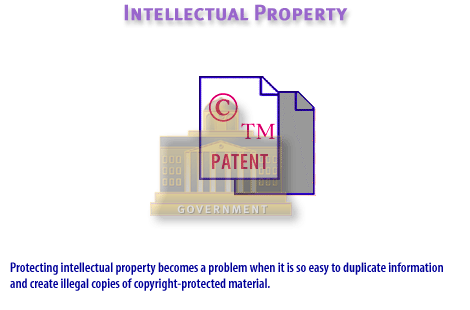
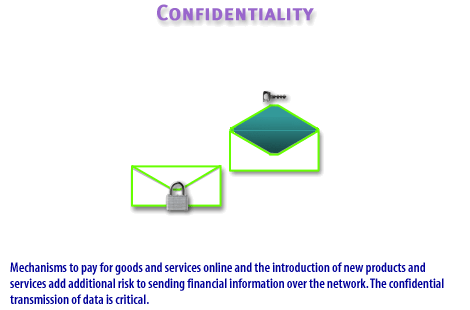
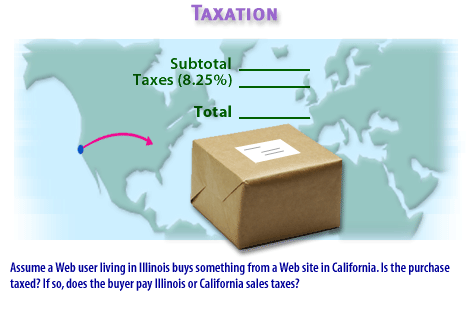
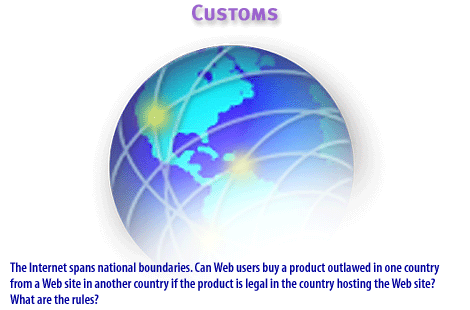
Question: What are the rules?
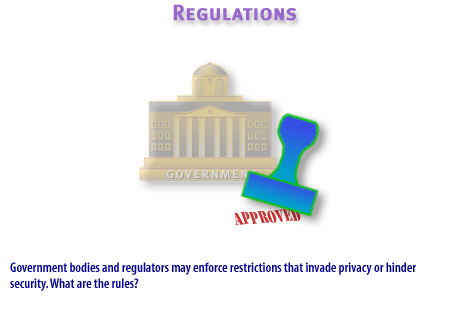
Question: What are the rules?
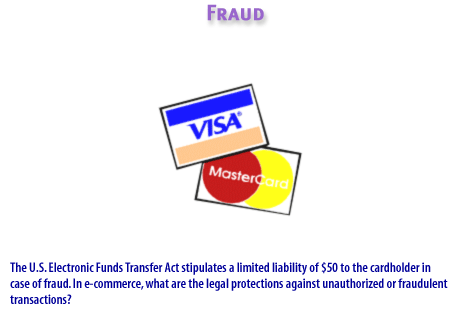
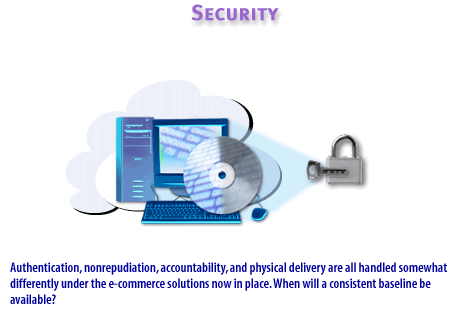
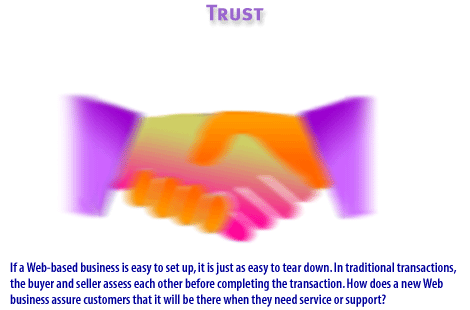
Question: How does a new web business assure customers that it will be there when they need service or support?
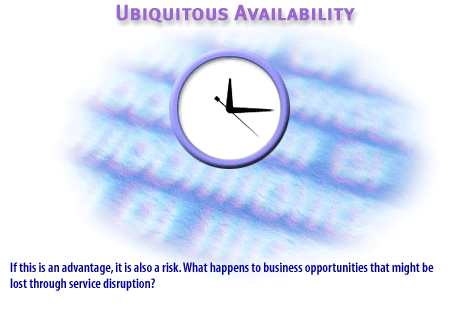
Risks of Ecommerce
These risks should be assessed in relation to the many advantages of using e-commerce, which you will learn about in the next lesson.
These risks should be assessed in relation to the many advantages of using e-commerce, which you will learn about in the next lesson.
Potential Problems
Defining e-commerce and e-business
The term electronic commerce most commonly refers to the process of buying and selling goods and services over the Internet. It has even found its way into popular dictionaries, and the 2000 edition of
the American Heritage Dictionary defines e-commerce as [c]ommerce that is transacted electronically, as over the Internet. Narrower definitions state that complete transactions, including ordering and payment, occur entirely via the Internet, while broader definitions include information exchange in support of transactions, even if the actual payment occurs outside the Internet
(often called "offline" payment). More recently, the term e-business has become popular. It refers more broadly to the conduct of business over computer networks.
E-business includes activities that are not purely commercial transactions, such as when two firms use the Internet to collaborate on product development or research, or a firm provides customer service online. Some consider e-business to include only internal applications of a firm's computer network, and not transactions with other firms. However, today, the terms e-commerce and e-business are often used interchangeably, and we follow
this practice in this module.